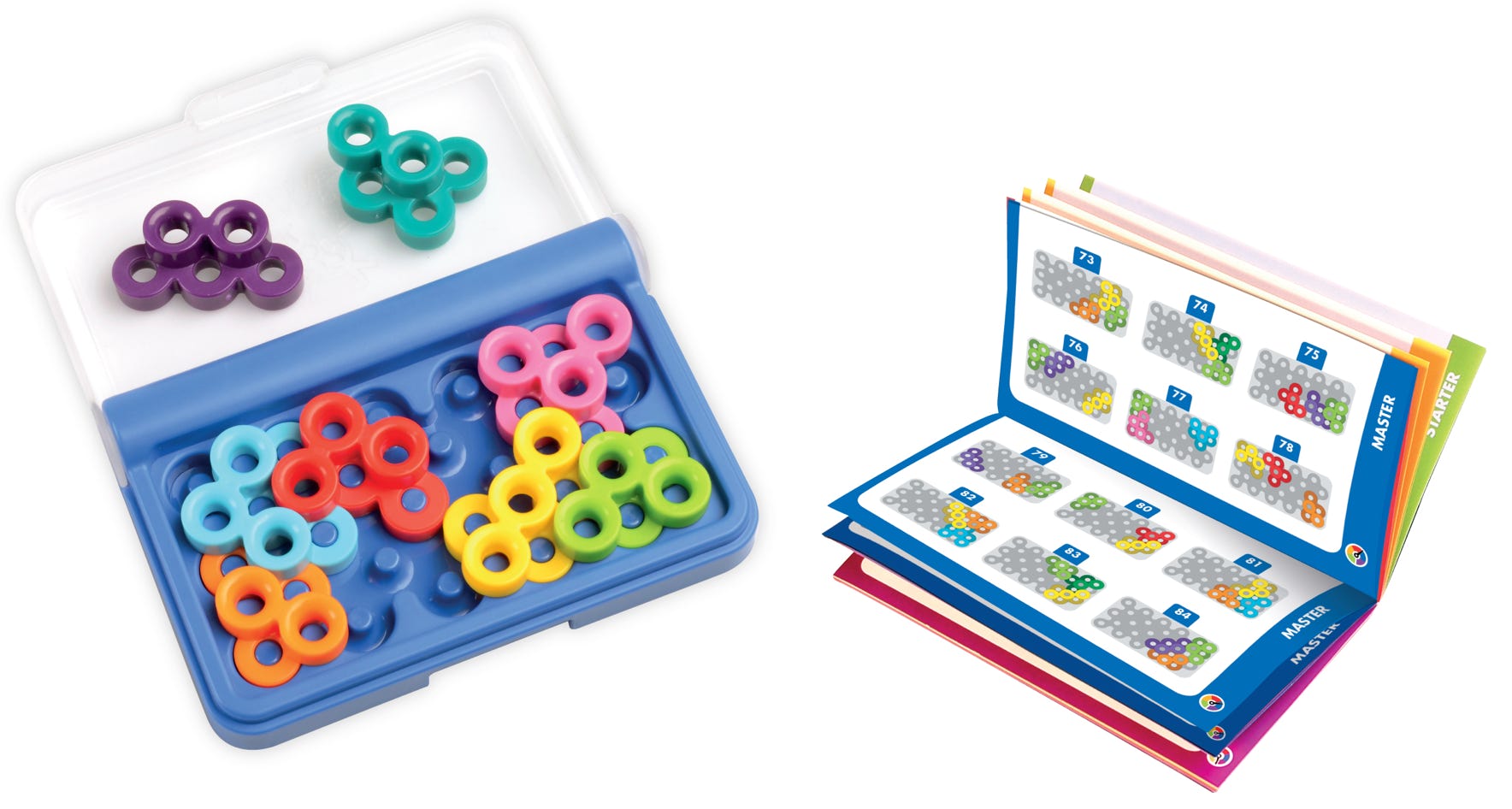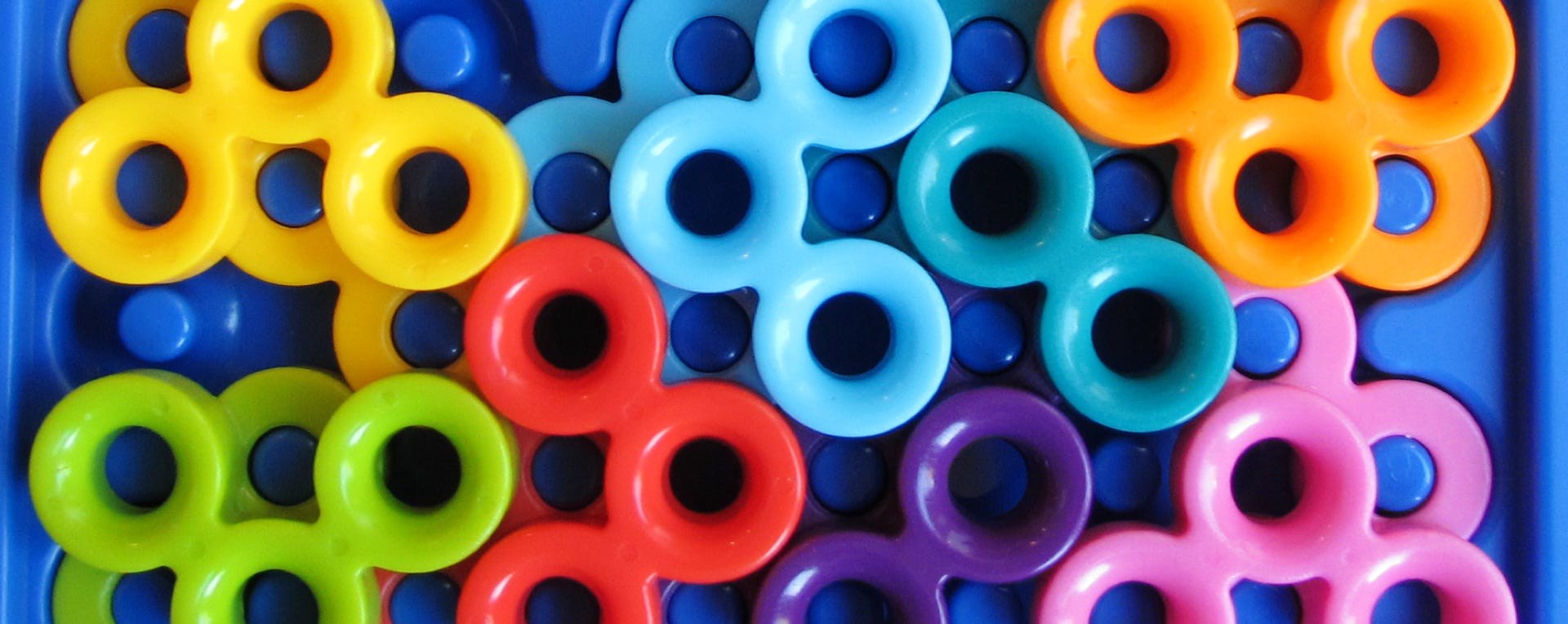IQ-Steps
The story behind the creation of IQ-Steps
Raf Peeters, January 2014
How many IQ-puzzles can I invent? Is there anything that hasn’t been done yet with “fill up the grid puzzles”? What would be the next step? These were all questions I had when I started working in 2013 on the successor of IQ-Twist, IQ-Fit and IQ-Link.
STEP BY STEP
What every IQ-puzzle of SmartGames has in common, is that you need to place all the puzzle pieces on the grid. And the object of IQ-Steps is no different. Never change a winning team.
Except that I changed more than just the shapes and colors this time! In IQ-Steps not only the position is important, but also the order in which you place the puzzle pieces on the game board. Although it looks familiar, it’s at the same time very different from the other IQ-puzzles I have designed so far. The most important new game rule is that you must place the puzzle pieces one by one. That’s where the name comes from: IQ-Step, you need to solve it “step by step”. You are not allowed to place more than one piece at the same time. Puzzle pieces that are already on the game board cannot be lifted to fit new pieces, nor can new pieces be slid under existing pieces on the board. The first prototype of the game was rejected because of this rule. In that version each puzzle piece was made of different cones that were connected to each other. It looked very nice, but unfortunately the cone shapes made it very simple to slide new pieces under pieces that were already on the game board.
LORD OF THE RINGS
So in the final version of the game each puzzle piece is made of rings and occupies 2 layers at the same time. The number of rings on both sides is not always the same (some have 2, some 3) and also the configuration of the rings can be different on both sides of the same puzzle piece. That makes this game look more complex than games where you only mirror a puzzle piece when you use it on the flip side.
But to keep things simple, you only have 8 puzzle pieces. The hardest challenges already show you the position of 2 puzzle pieces. So you just have to find the right place, order and orientation of 6 or less puzzle pieces. How hard can that be? Placing the puzzle pieces in the correct order, not only when completing each challenge but also during the setup, is an essential part of the game. The challenge shows you some fixed puzzle pieces, but NOT the order in which you have to place the pieces on the game board. Easy challenges are hard to set up but simple to solve. More difficult challenges are easy to set up, but hard to solve. There is only 1 possible solution to each challenge, which can be found in the included booklet.

Example of solution of IQ-Steps



GAME RULES IQ-STEPS
1) Choose a challenge and place the designated puzzle pieces as indicated on the board. Each puzzle piece is made of rings and occupies 2 layers at the same time. The rings on the bottom layer should always be placed over the game board pins.
2) Try to fit the remaining puzzle pieces onto the game board:
• Puzzle pieces must be placed one by one. Placing more than one puzzle piece at the same time is not permitted.
• Puzzle pieces that are already on the game board cannot be lifted to fit new pieces, nor can new pieces be slid under existing pieces on the board.
• Puzzle pieces cannot be stacked higher than 2 layers.
• Newly placed puzzle pieces can overlap puzzle pieces that were already placed, but pieces cannot overlap the border of the game board.
• Placing the puzzle pieces in the correct order, not only when completing each challenge but also during the setup, is an essential part of the game.
3) There is only 1 possible solution to each challenge, which can be found in the included booklet. The numbers on the puzzle pieces in the solution indicate the order in which the pieces need to be placed on the grid. If two pieces have the same number, it doesn't matter which piece you place first.
Website ©2014 Raf Peeters
Products and images: © Smart